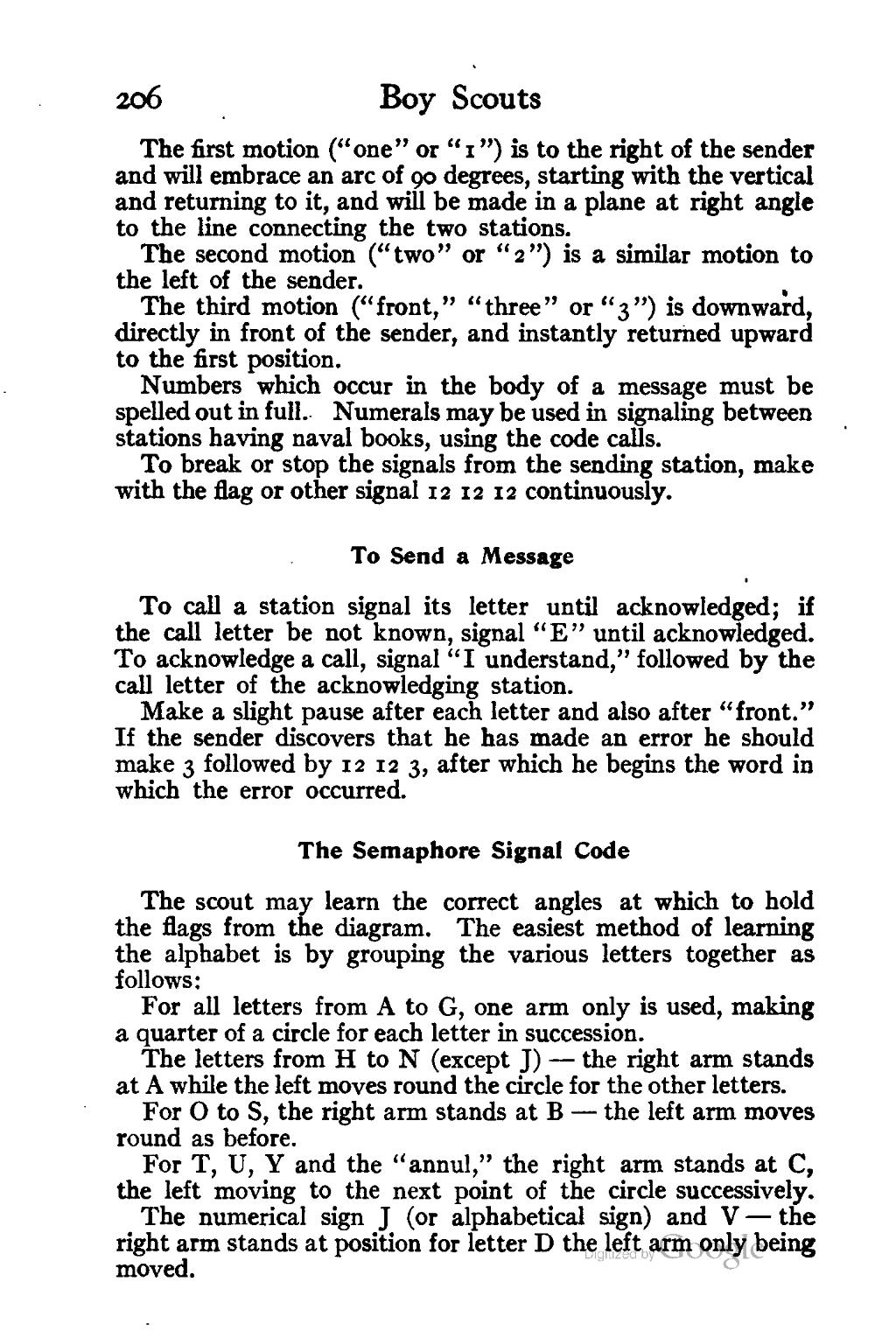The first motion ("one" or "1") is to the right of the sender and will embrace an arc of 90 degrees, starting with the vertical and returning to it, and will be made in a plane at right angle to the line connecting the two stations.
The second motion ("two" or "2") is a similar motion to the left of the sender.
The third motion ("front," "three" or "3") is downward, directly in front of the sender, and instantly returned upward to the first position.
Numbers which occur in the body of a message must be spelled out in full.. Numerals may be used in signaling between stations having naval books, using the code calls.
To break or stop the signals from the sending station, make with the flag or other signal 12 12 12 continuously.
To Send a Message
To call a station signal its letter until acknowledged; if the call letter be not known, signal "E" until acknowledged. To acknowledge a call, signal "I understand," followed by the call letter of the acknowledging station.
Make a slight pause after each letter and also after "front." If the sender discovers that he has made an error he should make 3 followed by 12 12 3, after which he begins the word in which the error occurred.
The Semaphore Signal Code
The scout may learn the correct angles at which to hold the flags from the diagram. The easiest method of learning the alphabet is by grouping the various letters together as follows:
For all letters from A to G, one arm only is used, making a quarter of a circle for each letter in succession.
The letters from H to N (except J)—the right arm stands at A while the left moves round the circle for the other letters.
For O to S, the right arm stands at B— the left arm moves round as before.
For T, U, Y and the "annul," the right arm stands at C, the left moving to the next point of the circle successively.
The numerical sign J (or alphabetical sign) and V—the right arm stands at position for letter D the left arm only being moved.
